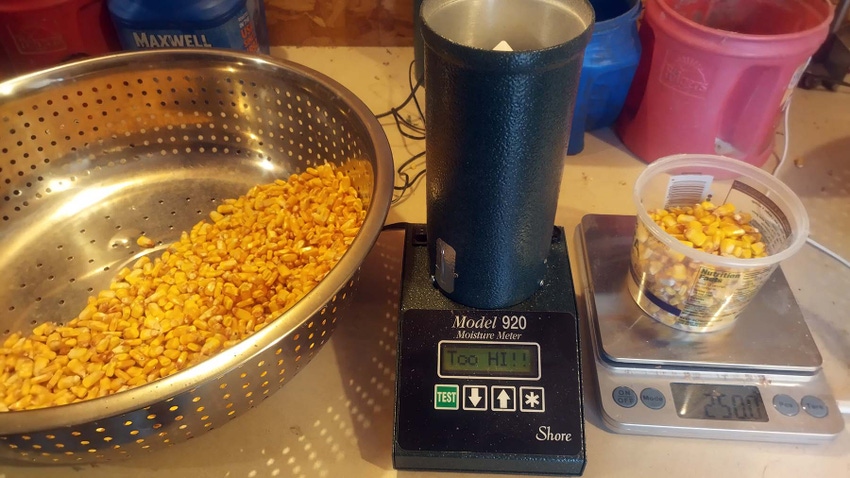
In our part of the Corn Belt, corn just isn’t drying down. The moisture meter tells the whole story: ‘Too Wet!!’
When I get that message on the moisture meter, I need to change the test setting to ‘Hi-moisture corn.’ But really, I shouldn’t even bother, the message means the corn is above 30% moisture. The old adage says corn should dry 1 point a day after it is mature. We counted on half that, and we didn’t even get a quarter of the drying needed last week.
We even planted pretty short maturity corn for our area. I planted some 98-day corn and we planted quite a bit of 102-104 day corn. We don’t do this on a bunch of acres, but maybe 20-25%. I would say that the majority of the corn sold in our geography is 106-112 day hybrids.
So, we should be ahead of the harvest curve, right?
Cutting weather risk
One reason I prefer to go shorter season hybrids is the weather risk. I’m mainly talking about bad weather events after the crop is mature like wind that can take a crop down. The longer the crop sits in the field, the longer it is exposed to this risk. Going shorter also allows us to wait for better planting conditions without pushing harvest back. We can let the soil dry out and warm up a bit before pulling the planter across the field.
Probably the biggest reason I lean on earlier maturing hybrids is quick ship market premiums in the fall. The last few years this has been big in my grain marketing plan. Most farmers don’t carry crop over from one crop year to another. This means that July-August is the normal timeframe when farmers sweep the bins. In years when production was lean (or demand was high), the feed mills and ethanol plants are pretty tight on supply come September. The animals need to eat and the plant needs to keep running.
This leads to quick ship bid opportunities. Offers can be here one minute and gone the next. Most of the time you have between a one and two week window to deliver the grain.
This fall there were opportunities to sell corn in September for a dollar more than October. Unfortunately, I wasn’t able to get in on that deal because we just didn’t have corn that was ready. I was, however, able to go a week later and get a decent bonus.
For a few days, I was sweating it out. After doing hand samples the beginning of last week, I committed to deliver quite a few bushels by the end of this week. We got a surprise when we took the combine to the field, then the next field, then the next field! We barely found enough grain to fill the contracts.
It cost a bit more to dry the corn, but we will meet the Friday deadline.
About the Author(s)
You May Also Like






